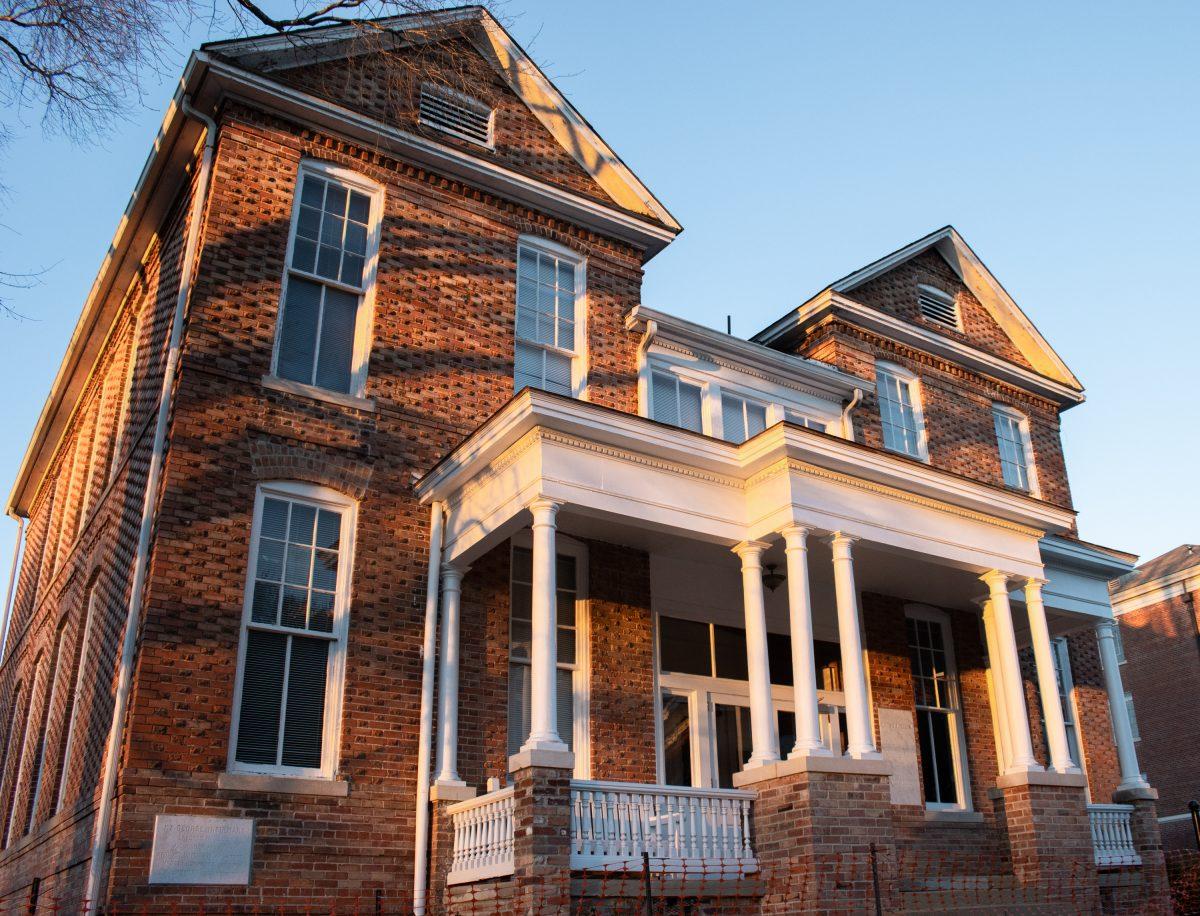Mississippi State University was first founded and chartered as a land-grant school on Feb. 28, 1878. Each building that dots the 4,200-acre campus has a name attached, and behind every name is an individual and a story to tell.
“You go on around campus, and there are those sorts of ties, but it primarily fits three or four categories: former presidents, political or governmental figures, donors and, occasionally, a case such as Scott Field—which was named for Don Scott, who was killed in service and was honored that way,” said Sid Salter, chief communications officer at MSU.
Starting at the beginning, Lee Hall was first constructed in 1909 and named after the founding president of MSU, Stephen Dill Lee. A bust of his head can be found outside the building on the Drill Field. Lee served as president for 19 years, the longest tenure of any MSU president.
George Hall was originally designated the James Z. George Memorial Hospital. James Z. George was a Mississippi senator in the 1800s. The hall was built to serve as the university’s infirmary in the early 1900s, offering treatments for various illnesses, including mumps, malaria and whooping-cough.
In 1918, an outbreak of Spanish Influenza spread across MSU’s campus after students, all-male at the time, hiked to West Point, MS, to join the training efforts for World War I. Young potential cadets from across the country gathered at the military base in West Point, spreading the Spanish flu among themselves. Thus, once those from MSU returned, they brought back the illness.
George Hall, still a hospital at the time, was the obvious choice to become the epicenter of aid on campus. It was transformed into one huge ward, lined with dozens of beds. Sadly, the flu patients eventually passed away, and George Hall had to undergo yet another change: the basement was converted into a makeshift morgue.
A system was devised where wagons with wooden coffins would run from the Industrial Education Building, also known as the “Twin Towers Building,” and make their way to the back of the infirmary, load the bodies inside with salt for embalming purposes, seal it and then send the coffin to the student’s family.
“Every Halloween, some reporter will call and say, ‘Is it true that George Hall is haunted?’ and I’ll go, ‘Well, my office was there for a number of years, and I was in-and-out of the building in the middle of the night and early morning, and I never saw anything amiss except there was a hole in the floor and skunks would get in,” Salter said.
Allen Hall was named after Henry Edward Allen, a proud MSU alumnus, business major and subsequent successful business owner. He donated a large sum to the construction of Allen Hall and had it dedicated to his daughter, Barbara Ann.
While many buildings are named after men, there are a few buildings around campus that have been named after women who made a lasting impact on campus.
DeeDee Baldwin is the History Research Librarian at Mitchell Memorial Library and previously taught a class centered on MSU history.
“One or two of the buildings on campus are named after women,” Baldwin said. “Cresswell is named for a woman. Rice Hall is named after a woman; she was actually a former librarian here.”
Nannie Herndon Rice, librarian, and May Cresswell, home demonstration agent, had Rice Hall and Cresswell Hall dedicated to them respectively.
The Colvard Student Union was named after Dean W. Colvard, president of MSU from 1960 to 1966. Colvard is most noted for serving as president during the “Game of Change,” a college basketball game between the MSU Bulldogs and the Loyola University Ramblers in March 1963.
The Game of Change is considered a significant milestone toward the desegregation of college basketball during the height of the American civil rights movement. In Mississippi at the time, an “unwritten law” said that Mississippi teams could not compete against a team with African American athletes. However, this game and the building pressure of the civil rights movement in the nation turned that rule upside down. Colvard made the final decision to allow the game to take place.
Most of the buildings on campus were dedicated to people from long ago. However, that rule does not apply to every building. Roy Ruby served as vice president of student affairs for over 17 years, dean of the College of Education for three years and worked both positions simultaneously for a year and a half.
Ruby Hall, part of Zacharias Village, which was named for former MSU president Don Zacharias, who served for 13 years, was built and dedicated to Roy Ruby in 2004. Ruby retired from the university the same year.
Ruby was retired for about four years before the university called him back to serve as interim president while the Board of Trustees chose a new president to fill the role permanently. In 2009, Mark E. Keenum assumed his role as MSU’s president.
“I feel unworthy of having a building named after me. The university was just very good to do that, but I certainly had no thought that I deserved that. There’s only longevity that I could point to,” Ruby said with a chuckle. “I can only say that I was there for a long time.”
Perry Cafeteria was named for George D. Perry, a dedicated 1919 alumnus. His wife, Jane Perry, wished for the university cafeteria to be named for her late husband after she donated $1.5 million to preserve and renovate the space in 1993.
McCain Engineering Building was dedicated to Professor Dewey M. McCain, head of the civil engineering department.
Dudy Noble Field is named after Clark Randolph “Dudy” Noble, an MSU baseball player who also coached the team for over 20 years.
According to the Department of Chemistry website, Hand Laboratory was named for Dr. William Flowers Hand, who attended MSU at 15 years old, graduated before turning 20 and then served as the university’s chemistry professor, state chemist, dean of science and vice president.
Depending on the time of attendance, each student who walks along the paths of MSU will develop a unique perception of the school, Salter said.
“You live here for four, five years. You get a good imprint of what the campus looks like, but, depending on when you were here, that’s a different imprint … It’s an exciting history to think about where we came from in 1878 when everything was around the Drill Field. Everything,” Salter said.
What’s in a name? MSU historians tell the stories behind the names of buildings on campus
Ashok Manick | The Reflector
George Hall has an eerie past connected to the Spanish Influenza pandemic. Rumors still swirl each year that the building is haunted.
About the Contributor

Emma Nisbet, Staff Writer
0
Donate to The Reflector
Your donation will support the student journalists of Mississippi State University. Your contribution will allow us to purchase equipment and cover our annual website hosting costs.
More to Discover














